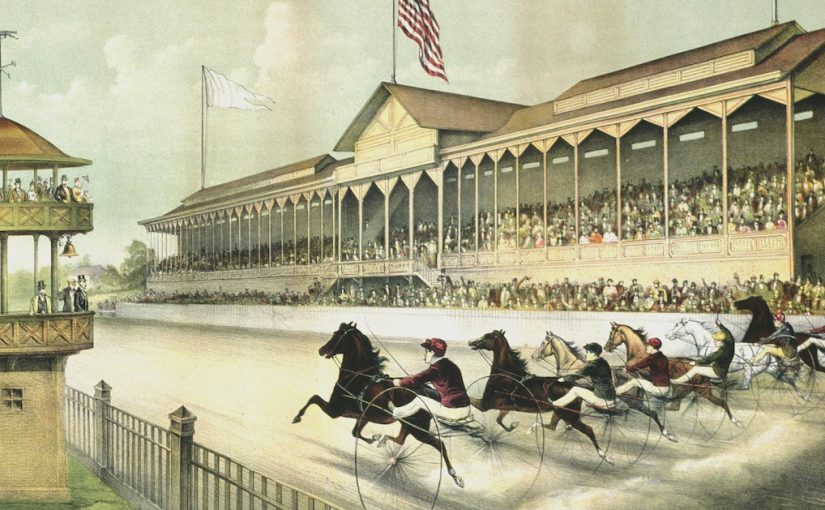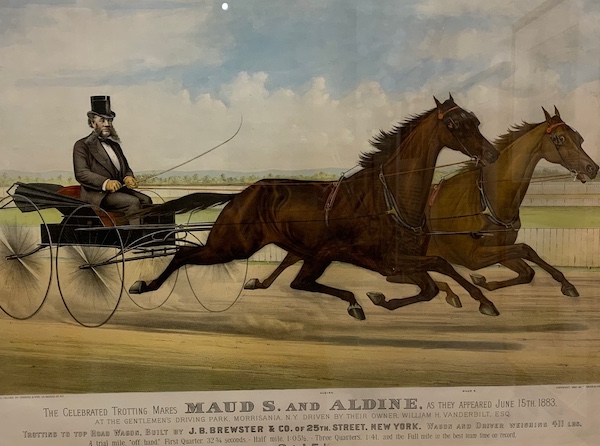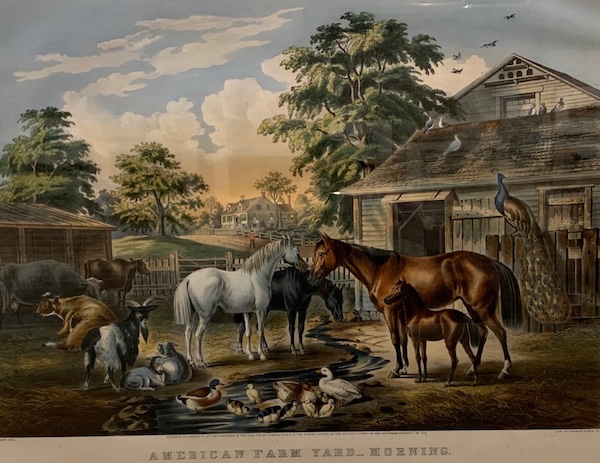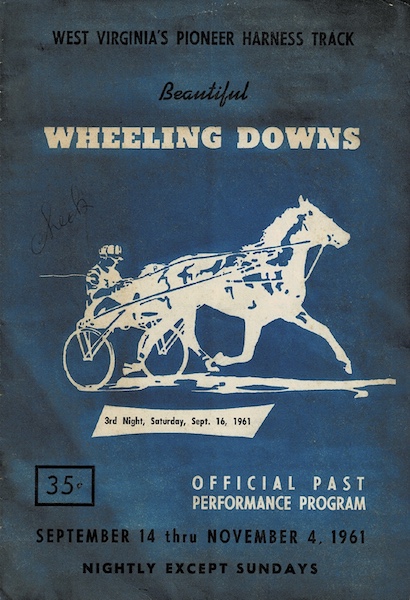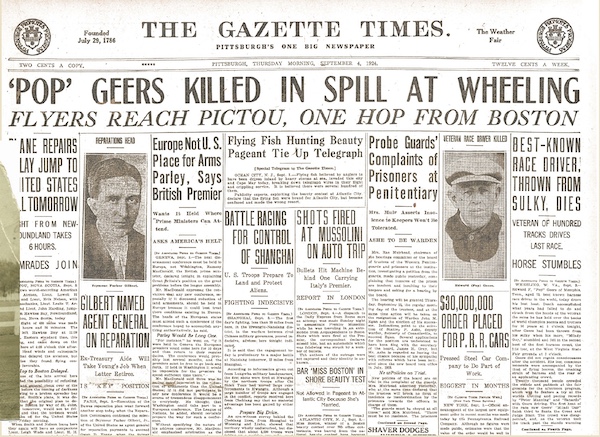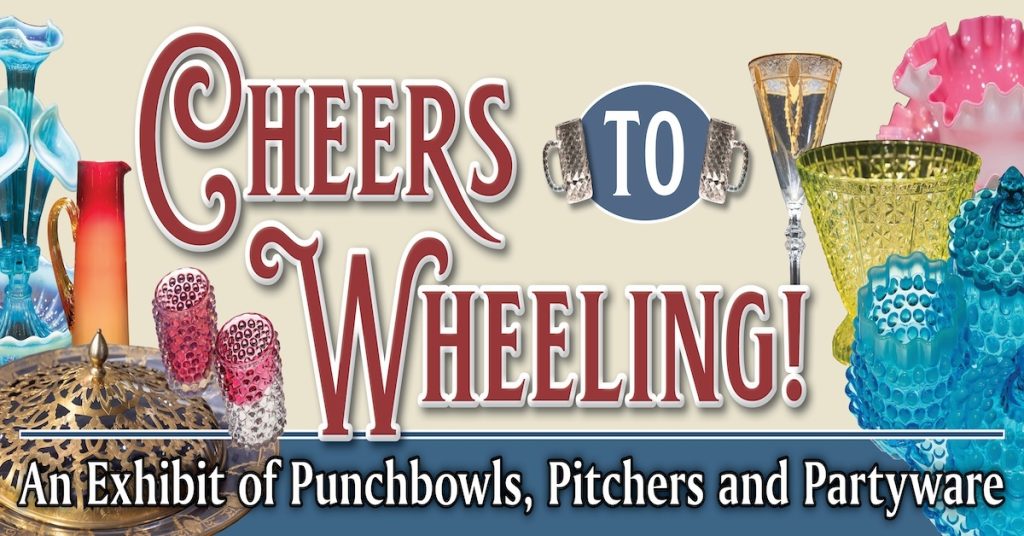By Phyllis Sigal
Just hear those sleigh bells jingling,
Ring ting tingling, too …
Come on, it’s lovely weather
For a sleigh ride together with you …
Take a listen to the popular holiday song, “Sleighride,” and you can’t miss this line … It’ll nearly be like a picture print by Currier & Ives.
Imagine a sleigh, pulled by sleek horses, winding up the snow-covered serpentine drive to the Oglebay’s stately yellow mansion. The children are singing Christmas carols, gifts are tucked under a blanket in the back. Deer stand off to the side, gazing curiously as the family passes.
It’s nearly like a picture print by Currier & Ives.
THE REAL THING
Now through Jan. 5, visitors to Oglebay Institute’s Mansion Museum can view “The Story of Harness Racing by Currier & Ives,” 32 colorful and nostalgic lithographs, as well as the “What is Harness Racing?” poster series.
And there’s at least one lithograph of a lovely sleigh being pulled through the snow by a couple of trotters.
“It’s a great exhibit,” Christin Byrum, director of the Museums of Oglebay Institute, said.
The collection of posters and prints is on loan from the Harness Racing Museum and Hall of Fame in Goshen, New York. Byrum credits Wheeling resident James McLure, a racing aficionado and a great supporter of Oglebay Institute museums, with introducing her to the Harness Racing Museum.
“It’s not often you’re going to see a collection of this size in one place. For the Currier & Ives lover, those into horses or even just classic Americana, this exhibit appeals to all audiences,” she said.
And with Wheeling’s history of harness racing on Wheeling Island, it’s a natural fit.
SOME BACKGROUND
The exhibit launched in 2001 and has been enjoyed by more than 420,000 people in 16 states, as well as Canada, Sweden and France, according to Rebecca Howard, curator of collections at the Harness Racing Museum and Hall of Fame, and a one-time groomer of Standardbreds.
“The lithographs, because of their documentary and aesthetic nature, have long been favored by those involved in harness racing. The Currier & Ives company captured images of actual events – horses and people – important to the development of the sport and did so in a visually pleasing way,” she said.
As early as 1951, donations of the prints began coming in. “However, it was the cooperative purchase of the Sidney A. Alpert collection in 2000 that made the project possible. Alpert was an avid collector and accumulated what was reported to be the world’s largest collection of Currier & Ives prints,” she explained.
AMERICA’S FIRST NATIONAL PASTIME
The exhibit shares the Harness Racing Museum’s wonderful collection of original Currier & Ives lithographs. In addition, it introduces or reintroduces harness racing, America’s first national pastime, to those unfamiliar with its culture, historic significance and economic impact.
“The lithographs illustrate, in an artful way, the birth of the sport and its early accomplishments. Prints depicting great trotting horses, bucolic mid-19th century scenes and comedic adventures convey a picturesque view of Americana prior to the advent and development of photography,” she explained.
Visitors will have an opportunity to engage in history in a unique way. “The business model that the Currier & Ives company pursued was one of quality and quantity. They generated images of popular subjects by talented artists so they could maximize sales. The existence of so many titles related to the trotting sport therefore is proof positive of its popularity and cultural significance during this era.
“We hope audiences, when viewing the exhibit, will be aware that in many instances the images depict actual horses and race events, attended by the artists for the express purpose of documenting the pageantry and results. What might be seen now as simply romantic Americana is actually more deeply significant and chronicles the importance and impact of the American-born trotting sport and American Standardbred horse.”
THE LITHOGRAPHS
“People are used to seeing Currier & Ives prints from magazines, in a smaller format. But these prints are quite large,” Byrum noted.
The 32 lithographs are accompanied by information about Currier & Ives and the lithograph process.
Interestingly, after the artist drew the print, young girls added the color, by an assembly-line method, Byrum explained. Each girl applied one color, then passed the lithograph on to the next girl who added another color, and so on.
“They are remarkable in the detail and colorization,” Byrum said.
Byrum’s two favorites are the “American Farm Yard,” with such details as a peacock, ducks, horses and birds, and “Rysdyk’s Hambletonian,” a brown beauty, who was “the leading progenitor of the American Standardbred.”
THE POSTERS
Six posters illustrate the uniquely American sport of harness racing.
The easy-to-read posters detail harness racing milestones that date back to 1788, significant sires and bloodlines. They also showcase information about the Harness Racing Museum and Hall of Fame.
THE WHEELING CONNECTION
When Byrum went searching for records of harness racing in Wheeling, she contacted the librarian at the Harness Racing Museum. They had little information on what she was seeking. However, she discovered something – or someone — else: Edward “Pop” Geers.
Tennessee native “Pop” Geers was a superstar, the best-known harness race driver in the world. He won more than 73 classics, earning more than a million dollars.
Sadly, he made front-page news across the country in Wheeling, West Virginia.
On Sept. 3, 1924, Geers was killed while racing at the West Virginia State Fairgrounds on Wheeling Island.
The Pittsburgh Gazette Times reported that Geers, “aged 73, best known harness race driver in the world, today drove his last heat. Death … struck from the hands of the veteran the reins he has held over the backs of world champion pacers and trotters for 50 years … after Geers had been thrown from his sulky when his mare, ‘Milady Guy,’ stumbled and fell in the second heat.”
A crowd of 20,000 witnessed the accident.
FROM MASTER’S THESIS TO UPCOMING BOOK
Sarah Elizabeth Hickman-McLeod, a Tennessee native and a lover of horses, has extensively researched “Pop” Geers.
She will be in Wheeling for the exhibit’s opening reception. In partnership with the Museums of Oglebay Institute, she also will present a special Lunch With Books program at the Ohio County Public Library. Both events are set for Thursday, Nov. 21.
“My hometown had harness racing and three tracks in the late 1800s. I have always heard stories and tales about horse racing and the fine breeding farms that were here. My family has had horses all my life, and I have always been interested in anything that had to do with horses,” she said.
Throughout her life, she passed a monument to Pop. However, she didn’t know much about him until she was looking for a topic for her thesis. “The director of the archives gave me a folder about him to look at one day. From the first moment I read an article about Pop, I knew that I had my thesis topic,” she said.
“The most interesting and extraordinary thing about him was his demeanor. He treated the horses and his stable staff with the utmost respect and care. Also, he had a high moral character. Often, he was called to the judges’ stand at a harness race to give an accurate account of what had happened on the track if there were some questions about the chicanery,” Hickman-McLeod explained.
Her book is forthcoming, titled “The Forgotten Man of the Trotting Turf: The Story of Edward Franklin ‘Pop’ Geers.” At Lunch With Books, she will talk about the life and times of Geers, show some artifacts and give a Power Point presentation. The program is set for noon.
CELEBRATE TWO EXHIBITS
Join us from 4:30-6:30pm Thursday, November 21 for a free, progressive reception to celebrate both “The Story of Harness Racing” and “Cheers to Wheeling!”
“Cheers to Wheeling: An Exhibit of Punchbowls, Pitchers and Partyware,” on display in the Glass Museum features an array of glass partyware from the Victorian era to the time when the Oglebays lived in the mansion.
Holly McCluskey, Oglebay Institute curator of glass, and author Sarah Elizabeth Hickman-McLeod will be in attendance to answer questions.
You can also enjoy refreshments at both Mansion Museum and Glass Museum.

